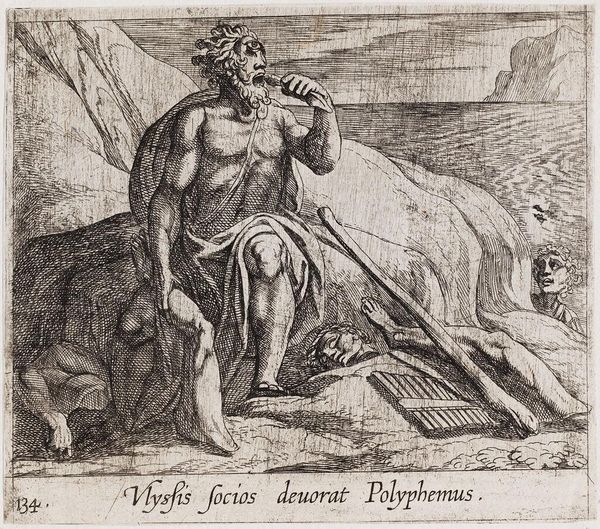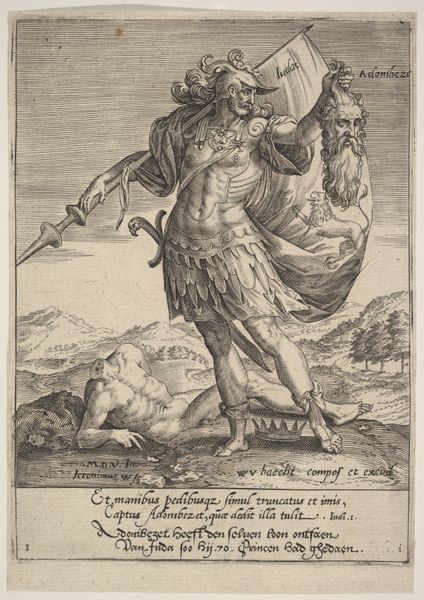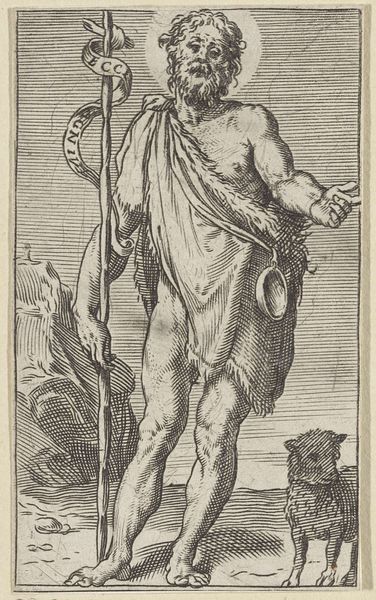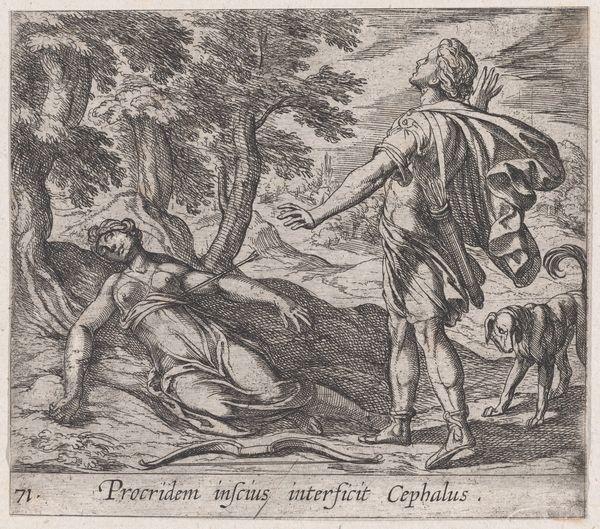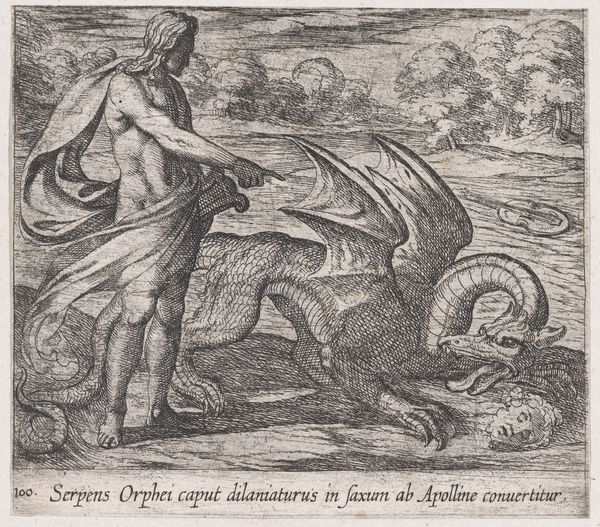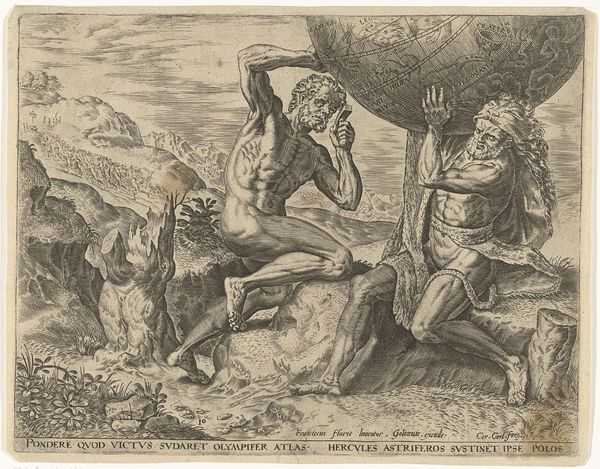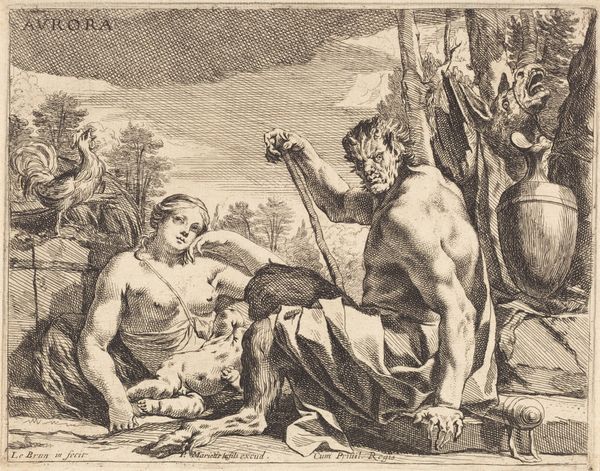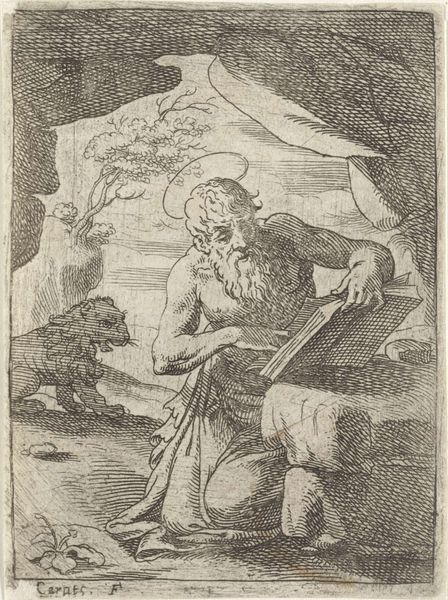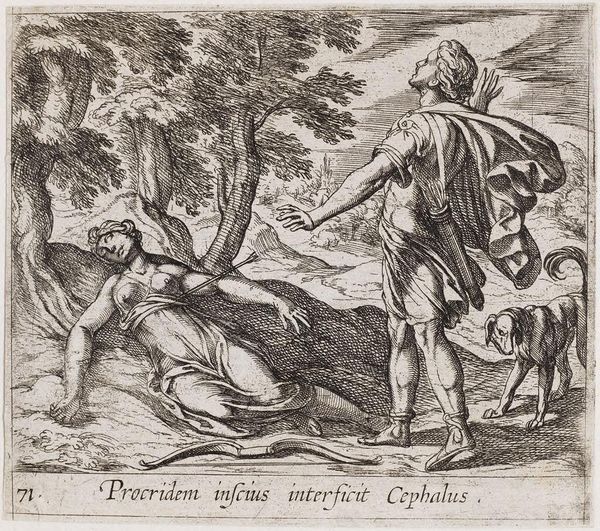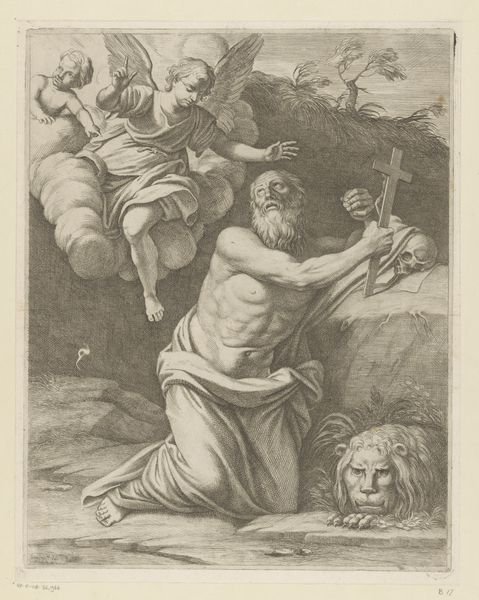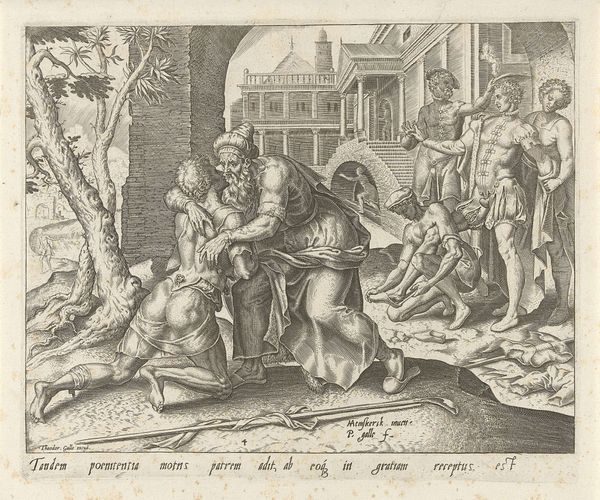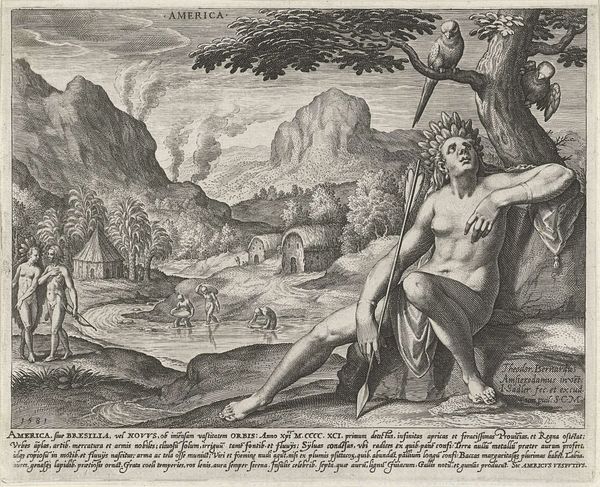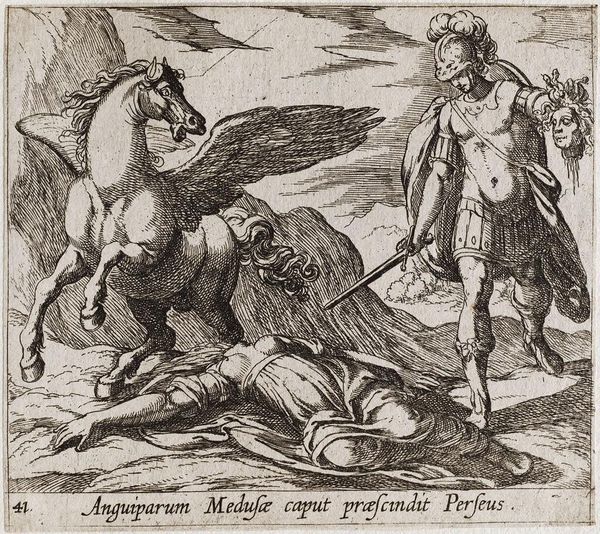
Plate 143: Polyphemus Eating Ulysses' Men, as Achaemides Watches (Ulyssis socios deuorat Polyphemus), from Ovid's 'Metamorphoses' 1606
0:00
0:00
drawing, print, engraving
#
drawing
#
baroque
# print
#
figuration
#
history-painting
#
engraving
Dimensions: Sheet: 3 15/16 × 4 5/8 in. (10 × 11.7 cm)
Copyright: Public Domain
Antonio Tempesta created this engraving of Polyphemus eating Ulysses' men in the late 16th or early 17th century. It is a visual interpretation of a story in Ovid's 'Metamorphoses’, a collection of mythological narratives in which characters are transformed, often through acts of violence. Made in Italy, this print reflects a renewed interest in classical literature and mythology that shaped the artistic output of the Renaissance. The shocking imagery of the one-eyed giant devouring human flesh speaks to a culture grappling with themes of power, savagery, and the struggle between civilization and barbarism. Tempesta made this print at a time when printmaking was becoming a powerful medium for disseminating images and ideas across Europe. The social role of such imagery was tied to the cultural values of the elite, with artists like Tempesta finding patronage in wealthy and noble families. To fully appreciate this work, we must consider the social and institutional contexts of its creation, drawing upon historical texts, artistic biographies, and studies of print culture.
Comments
No comments
Be the first to comment and join the conversation on the ultimate creative platform.
